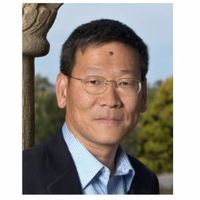Experimental Condensed Matter Physics

Measuring the behavior of electrons in material systems. Semiconductor nanostructures, superconductivity and low-temperature physics, atomic and molecular measurement and control, novel quantum materials.
News: Stanford researchers create exotic electrons that may lead to new materials, devices
Research in experimental condensed matter physics at Stanford takes place in the Physics and Applied Physics Departments and has strong connections with the Photon Science Department at the SLAC National Accelerator Laboratory. A broad set of topics are explored in the Varian Physics Laboratory, Geballe Laboratory for Advanced Materials and through the Stanford Institute for Materials and Energy Science.
A large community of physicists at Stanford address questions in condensed matter physics and materials science. How do electrons organize themselves and flow on the nanoscale? This is addressed with nanofabrication, materials growth, precision low-temperature electrical measurements, and novel scanning probe techniques. Other efforts address emerging phases and quantum phase transitions in strongly correlated electron systems, highlighting time-reversal and inversion symmetry breaking, charge and spin ordering and their competition with magnetism and superconductivity. Condensed-matter techniques are used for precision measurements of fundamental physics such as Newton's gravity at sub-mm length scales. Other research addresses emerging phenomena in quantum solids: high-temperature superconductivity, excitations in low-dimensional compounds, quantum-phase transitions, novel spin-orbit physics, heavy fermions, charge-density waves, magnetoresistive materials, metal-insulator transitions, organic conductors and superconductors. These experiments rely on various forms of angle-resolved photoemission spectroscopy: spatial, spin and time-resolved, inelastic x-ray scattering, and soft x-ray emmision spectroscopy. Efforts at the intersection of condensed matter physics and nanoscale science and technology use scanning probe instruments to do quantum imaging and manipulation of matter on length scales now approaching the femtometer; work is this area addresses single atoms, molecules, electrons, spins, vibrons, and quantum phases.
Related Faculty
Related News

The experimental setup where Pouse and colleagues studied their "two-island" device. (Winston Pouse/Stanford University)
"We're always making mathematical models that we hope will capture…

Source: Technology Networks
The architecture for these new quantum devices involves…







